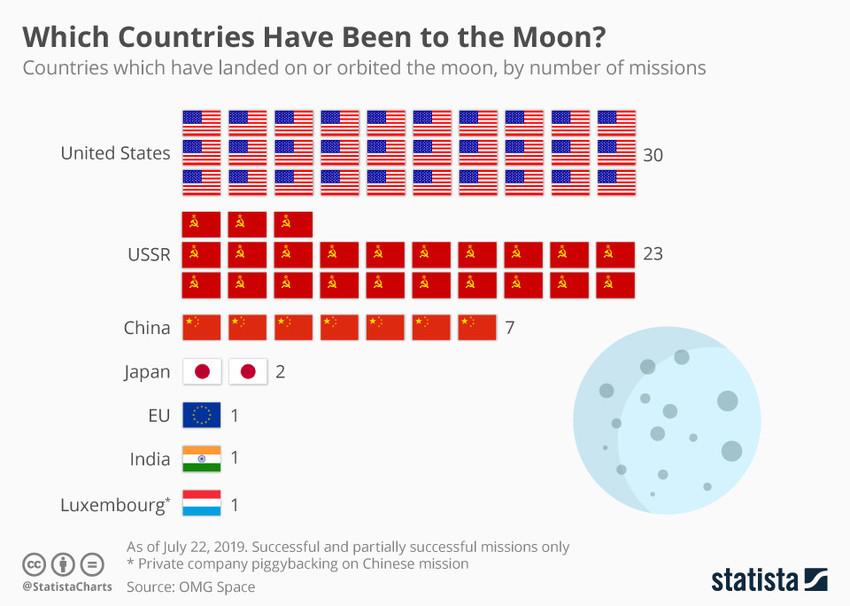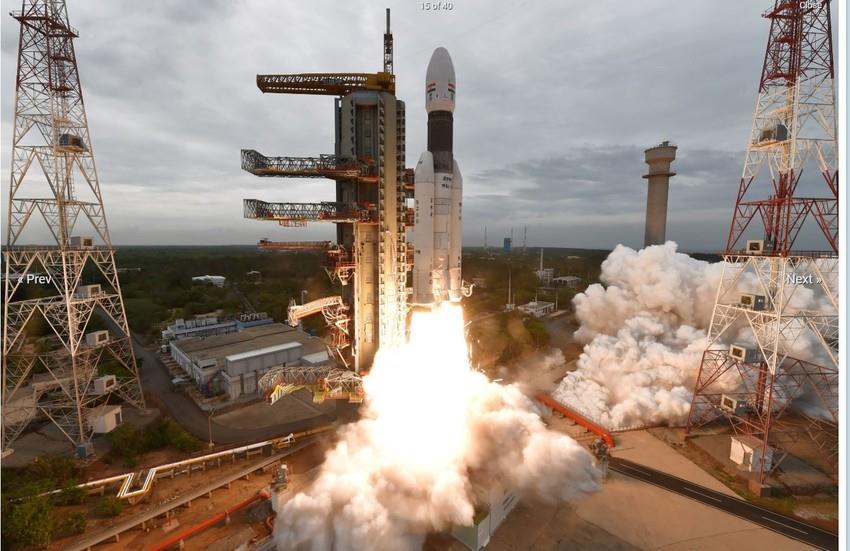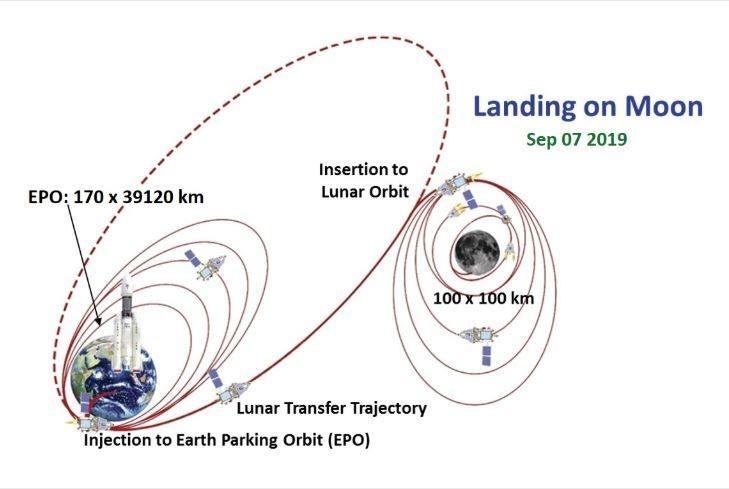By Douglas Broom*
The country’s Chandrayaan 2 spacecraft has successfully launched from the Sriharikota space centre – a giant leap in its increasingly ambitious space programme.
If it succeeds, India will become the fourth nation to achieve what’s known as a “lunar soft landing”, following the former Soviet Union, the US and China.

So as the country blasts into space, here are three key facts about its plans.
1. It’s heading to the moon
The launch of Chandrayaan 2 – its name means Moon Vehicle in Sanskrit – was delayed for a week by technical problems before its successful lift-off on 22 July.
It blasted off on top of India’s most powerful rocket – the GSLV Mk III, and its unmanned lander is due to touch down near the moon’s south pole on 7 September.
Named Vikram, after the founder of the Indian Space Research Organization (ISRO) Dr Vikram A Sarabhai, the lander will deploy a rover called Pragyan – wisdom in Sanskrit – that will explore the surface.
It will be the second time India has been to the moon. In 2008, Chandrayaan 1 orbited and discovered water molecules on its surface. The spacecraft also launched an “impact module”, which sent images back to Earth before crash-landing.

2. It’s planning manned space flights – and a space station
India wants to launch its first manned space mission in 2022, to mark the 75th anniversary of the nation’s independence. Codenamed Gaganyaan – space vehicle in Sanskrit – the project has a budget of almost $1.5 billion.
Gaganyaan will have a crew of two or three people and spend around seven days in low Earth orbit. ISRO says the mission is the first step towards building India’s own space station, which it plans to do in five to seven years.
The country launched a space probe to Mars in 2014 and is planning a second for 2022. It has also approved a project to study the sun late next year, and ISRO chairman Dr K Sivan has reportedly said that he wants to reach Venus in 2023.
India is planning these ambitious missions on the back of its development of a range of increasingly large launch rockets, culminating in the GSLV Mk III, which launched the Apollo moon missions and is as powerful as the Saturn V.

3. It’s emerging as a leader in launching other nations’ satellites
There are more than 2,000 working satellites orbiting the earth. Almost half of them belong to US-based organisations, 300 originate from China and roughly half that number from Russia.
The market for commercial space launches is crowded and competitive with Russia’s Soyuz and Vega launchers competing with those of the European Space Agency and the reusable rockets flown by US entrepreneur Elon Musk’s SpaceX corporation.
India has launched almost 270 satellites from 32 countries using its PSLV rocket since the first version of the launcher entered service in 1993. The SpaceX Falcon 9 has so far launched just over 100.
Commercial satellites now heavily outnumber those used by the military. But some have questioned the amount being spent by nations like India on space exploration when they have pressing social issues at home.
There is also concern that the proliferation of orbiting objects may cause collisions with manned missions like the International Space Station. Although life-expired satellites eventually burn up in Earth’s atmosphere, they can drift for many years before meeting a fiery end.
The UN Committee on the Peaceful Uses of Outer Space (COPUOS) is drawing up best practice guidelines, and China has recently acted to regulate its growing private space industry. The UN also maintains a Register of Objects Launched into Outer Space.
*Senior Writer, Formative Content
**First Published in weforum




 By: N. Peter Kramer
By: N. Peter Kramer
